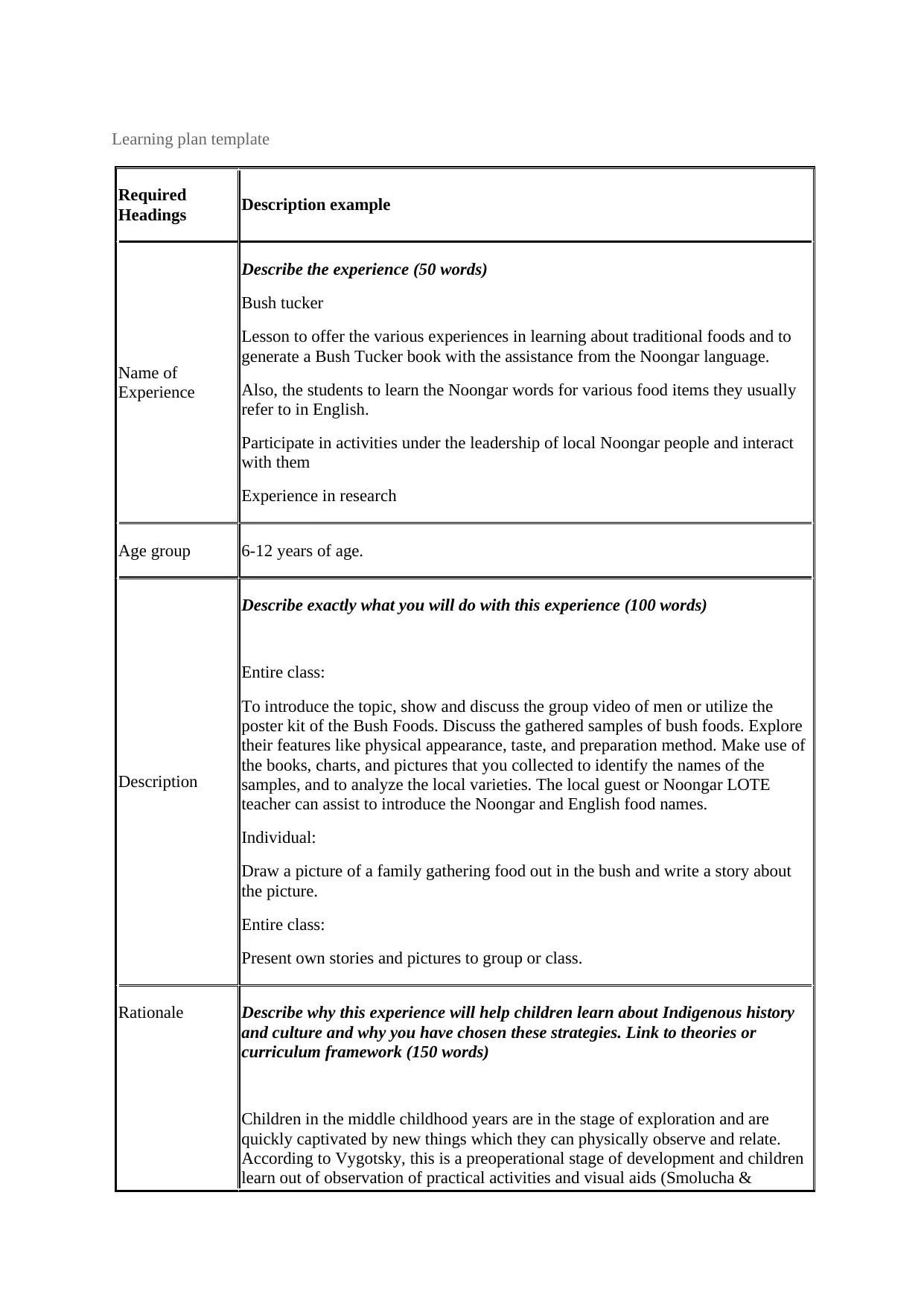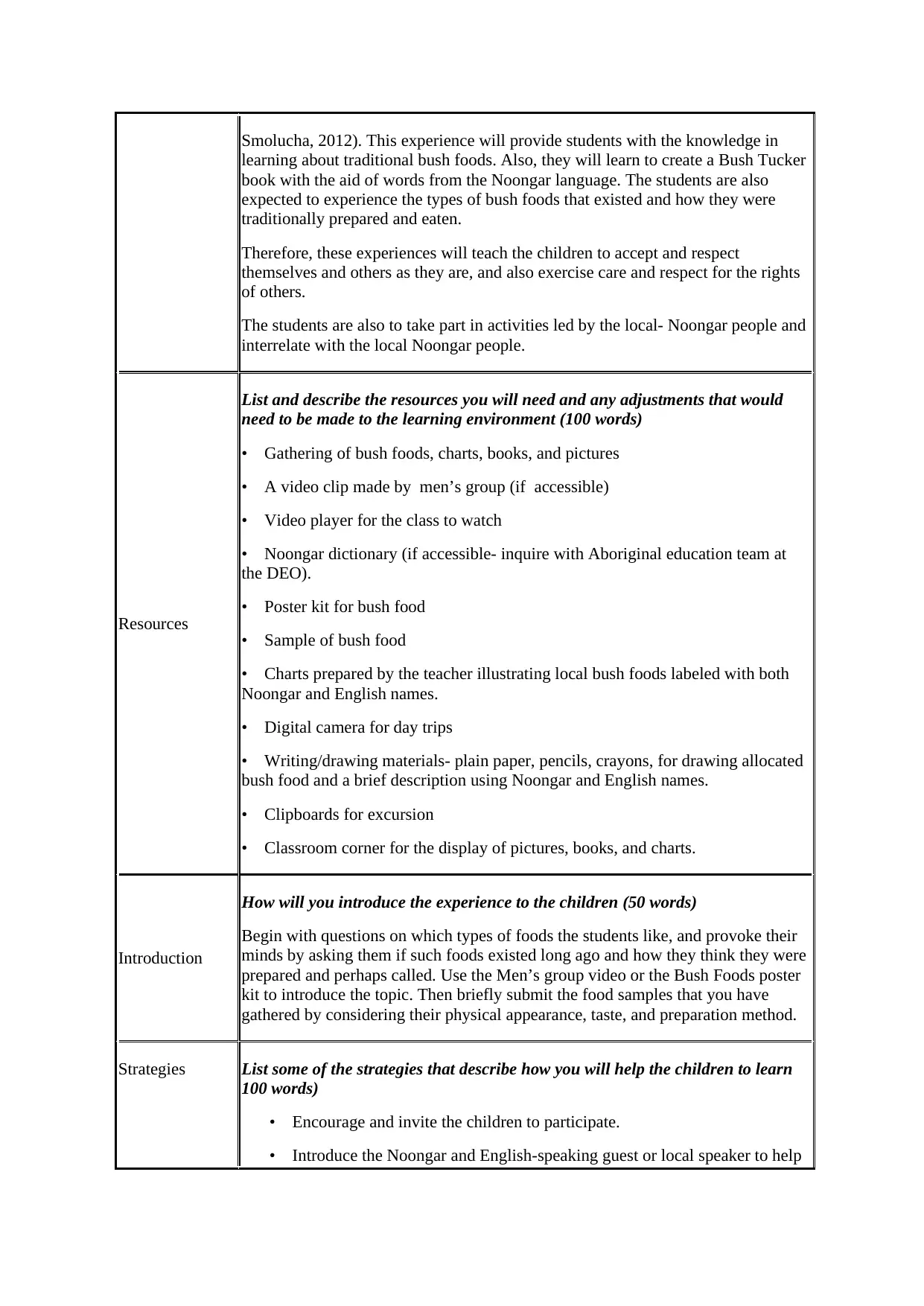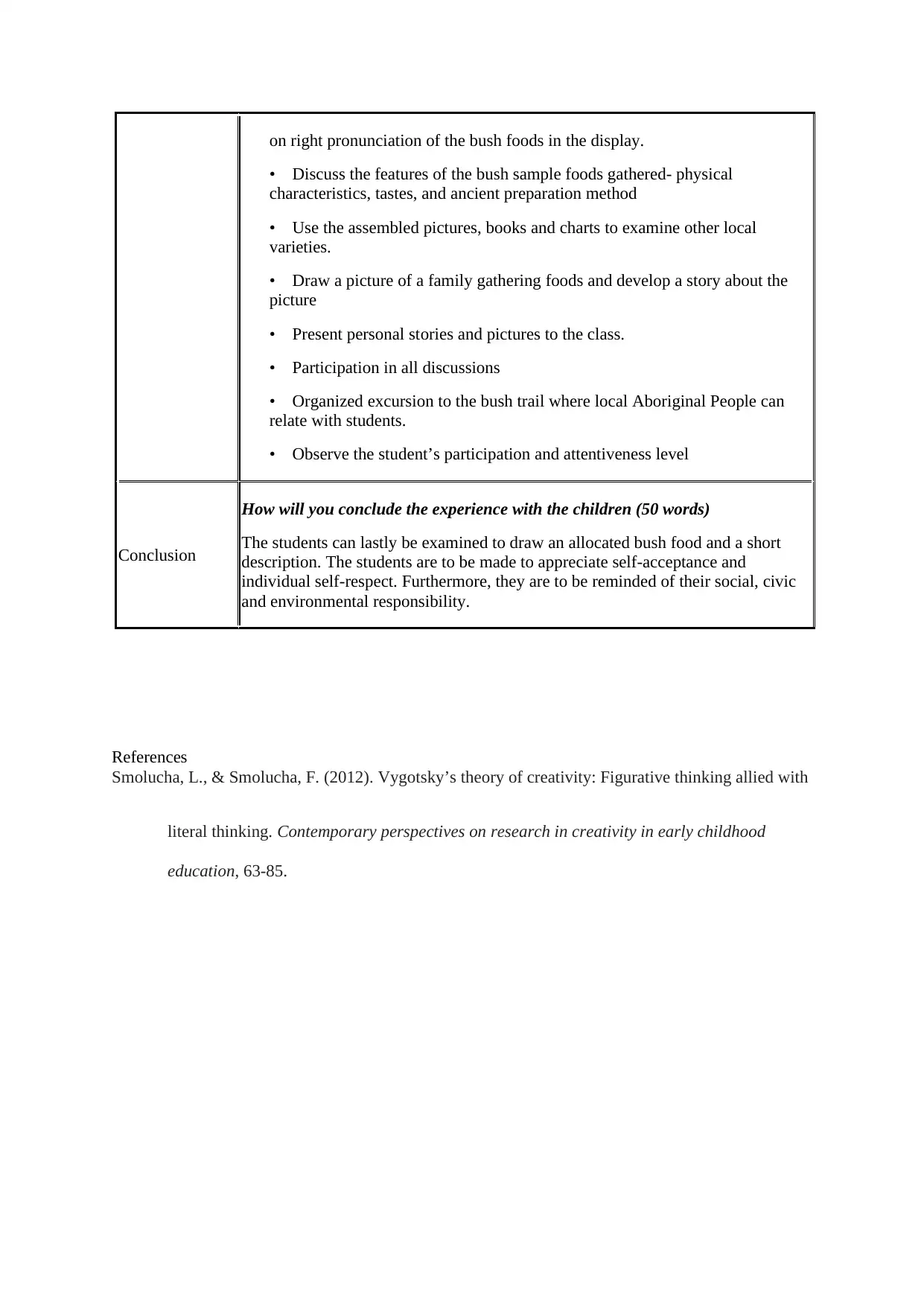Bush Tucker Learning Plan: Exploring Indigenous Culture with Children
VerifiedAdded on 2023/06/15
|3
|920
|51
Portfolio
AI Summary
This portfolio assignment presents a learning plan centered around 'Bush Tucker' to educate children aged 6-12 about Indigenous history and culture, specifically focusing on Noongar traditions. The plan involves activities such as exploring and identifying bush foods, learning their Noongar names, and understanding traditional preparation methods. It integrates Vygotsky's learning theories by using visual aids and practical activities. Resources needed include bush food samples, charts, books, and a video clip, with adjustments made to the learning environment to display these materials. The introduction involves engaging questions and the use of visual aids, while learning is facilitated through participation, guest speakers, and excursions. The experience concludes with students drawing and describing bush foods, reinforcing self-acceptance, respect, and social responsibility. The portfolio also includes reflections on personal attitudes, values, and the role of Indigenous education in advocating for children and families.
1 out of 3






![[object Object]](/_next/static/media/star-bottom.7253800d.svg)